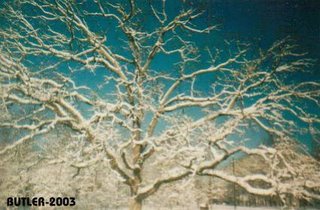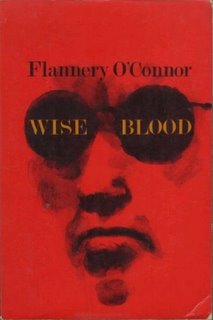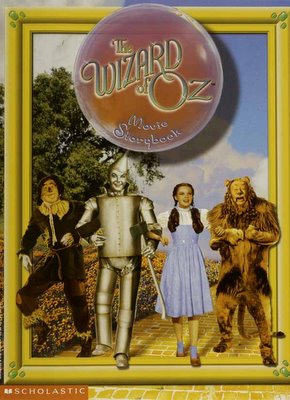Class Notes
The Bear by William Faulkner
*What is the name of the poem the father picked out from the bookcase and the boy thought it was just a poem about a girl...It was John Keats Ode to Grecian Urn.
*The theme of the bear is that the white man killed the bear which then killed the wilderness.
Dead Man *Bill Blake starts out an innocent and is entering the world of experience. This is a common themes in William Blake's poetry
*In the movie, people always get shot in the heart...
* He is dead before he even gets on the train, hence the title Dead Man
*Nobody was abducted as a child
*Bill Blake was abducted by William Blake
*It was more expensive to do the movie in black and white then color but the director insisted.
*The movie is a circle. It starts and ends in the same place. The coal guy gives away the ending at the very beginning.
*Bill Blake becomes William Blake when he says he is William Blake and then asks "Have you read my poetry" then he shoots the man. Nobody told him that he would write his poetry with blood... Poetry is a destructive force (By Wallace Stevens)
Two great styles--yet opposite
*Hemmingway's sentences are short and simple (just the style not the theme)
*Faulkner's sentences are very long and complex
Inititation
*Men's initiation is very public yet women's initiation is very private.
*For initiation part of the person has to die-the part left lives on in a way the person never knew possible
*Initiation starts with the person getting taken away from their family
*When you are going through initiation you are in the belly of the whale
-As college students we are in the belly of the whale while in the classroom. The classes are part of our initiation. When we leave the classroom and college we should all be different people then we were when we began college.
Invisible Man by Ralph Waldo Ellison
*Don't try to understand the novel just immerse yourself into the blues
-(What Did I Do To Be So)Black and Blue by Luis Armstrong
-click here and scroll down to listen to the song
*Rinehart is a unforgettable character...yet he never makes an appearance in the book. He is a runner, a gambler, a lover, a preacher.
The invisible man starts to become Rinehart.
A Look Back Through The Semester
We started out the semester with words that come to mind when thinking..."America"
words like: liberty, growth, opportunities, greed, pride, melting pot, honor, land, french fries, young, baseball, education, walmart, rebel, hypocrisy
American is a new, young country. Americans like to be seen as individuals and being original....But the word original can't be without its root origin. As a country, America, is not something completely new. As someone in class said America it is a melting pot. This country is filled with all sorts of different people with different back grounds and different stories. This country was created by people with a history.
Two books that Dr. Sexson recommended
"Love and Death in the American Novel"
"The Geography of the imagination"
It was said in class one day to trust the tale and not the teller. At first I thought this was absurd. If you should trust anyone it should be the person who created the tale. But the more we talked and it and the more I thought about it, it really makes sense. Sometimes the authors don't realize what different aspects they are including in the novel and really everyone should be able to read and tale and interpret it their own way. That is one of the great things about stories, the reader can really embrace the parts of the story that are important to them while another person can read the same story and have a completely different experience.
The 11 richest people of all time
1. Santa Clause
2. Richie Rich
3. Daddy Worbucks
4. Scrooge McDuck
5. Thirston Howell III
6. Willy Wanka
7. Bruce Wayne
8. Lex Luthor
9. J.R. Euwing
10. Charles Montgomery Burns
11. Charles Foster Kane
Notice something strange about this list...They are all fictional characters. Just a funny think to look and think through.
While reading the book "Daisy Miller" by Henry James our class discussions were circling around the ideas of flirtation and being carried away. The definition of flirtation that someone came up with in class was, "dancing around the boundaries of comfort or desire." I really liked that definition, I think it really captures the essence of the meaning.
Also the term being "carried away" began to slip into the conversation. This term has continued to pop up now and then during the continuation of the semester.
Being carried away, what does that mean? Have you even been carried away? Dr. Sexson asked that question is class and it really made me think of what "carries me away." Each time I keep coming up with the same vision...Being out on the river reading a book that I feel I am part of. I guess that is what most carries me away, books. I can forget the struggles and stresses of my world when I pick up a book and allow the characters to suck me into their own world. Also the mountains carry me away. Even though I rush around most days with blinders on when I do pause for just a moment and reflect in the simplistic beauty around me I am truly carried away.
Here are a few terms and points that Dr. Sexson thought important to know for the test:
Henry James
Flannery O'Connor
Wallace Stevens
Zora Neale Hurston
Citizen Kane L. Frank Baum, when writing the "Wizard of Oz" was trying to create an original American story.
Who is the master...Henry James
The imagination is always trying to find meaning
The truth is in where you are and what you do
The Wallace Stevens poems needed for the test
*Disillusionment of Ten O'Clock
*Bantams in Pine-Woods
*The Snow Man
*Study of Two Pears
*The Poems of Our Climate
*Tea at the Palaz of Hoon
*Sunday Morning
*The Idea of Order at Key West (memorized)
A little help in getting to understand Wallace Stevens
"Poetry is the subject of the poem" from stanza 22 of "The Man With The Blue Guitar"
In all of Stevens poems the subject of poetry can be discovered
His theme is the interplay between reality and imagination. Other words Stevens uses for reality are north, white and winter whereas other words for imagination are south, blue and summer.
Stevens is a Romantic
He can be compared with both Emerson (American) and Colerige (British), also both Romantics.
Romantics can be explained by three points
1. venerate nature
2. god-like power
-the power to create (poetry)
3. tend to be secular humanists
- in the absence of a god you have the self
The Autumn Leaves
 The Motive for Metaphor
The Motive for Metaphor
By Wallace Stevens
You like it under the trees in autumn,
because everything is half dead.
The wind moves like a cripple among the leaves
and repeats words without meaning
That is just the first few lines of the poem but right now they are the ones that I can picture. I really don't need to use my imagination for those lines, all I need to do is look out the window. This time of year the trees are so mesmerizing . The colors are golden and fiery. Yet the reason the trees are so beautiful is because the leaves are dying. I don't know why I find this to be so meaningful. I guess that to me it is saying that even in death things can still be beautiful. Even though the leaves are dying people are looking at them with appreciation and awe.
Happy Birthday Wallace Stevens!
 Ok, so I am a little belated. Wallace Stevens' birthday was on October 2 and in honor of the great poet there has been a request that Wallace Stevens fans are to dress up as a line from one of Wallace Stevens poem. So to show his respect to Stevens on his birthday, Dr. Sexson has requested that we create an image of how we would dress up as one of the lines in our own Wallace Stevens poem. My poem, Farewell to Florida, has a line that goes like this...."My North is leafless and lies in a wintery slime"....So the image that keeps coming to mind when I read that line is a tree that has lost all of its color and has been transformed into a snow catcher. It may be though that because I live in Montana and the snow is soon to be on its way I can't help but to envision a tree covered in snow.
Ok, so I am a little belated. Wallace Stevens' birthday was on October 2 and in honor of the great poet there has been a request that Wallace Stevens fans are to dress up as a line from one of Wallace Stevens poem. So to show his respect to Stevens on his birthday, Dr. Sexson has requested that we create an image of how we would dress up as one of the lines in our own Wallace Stevens poem. My poem, Farewell to Florida, has a line that goes like this...."My North is leafless and lies in a wintery slime"....So the image that keeps coming to mind when I read that line is a tree that has lost all of its color and has been transformed into a snow catcher. It may be though that because I live in Montana and the snow is soon to be on its way I can't help but to envision a tree covered in snow.

Wise Blood is labled under the genre of Southern Gothic. As described on Wikipedia, Southern Gothic is "grotesque" and "disturbing". I would say that this assessment is very accurate. On the surface Wise Blood seems to be a very radical story that doesn’t really make a point. When I was reading it through I was enjoying the writing style of Flannery O’Connor yet I was almost disturbed with the plot. O’Connor made the book very visual with the use of metaphors and similes.
"She had theseyer brown glasses and her hair was so thin it looked like ham gravy trickling over her skull." (pg 47)
For me, this is one of the more disgusting images from the book. Yet my imagination can paint a picture with great detail of a girl with hair that looks like brown gray.
If I had to give someone just the outline of the story they would probably think I was insane for reading such a book. Yet I enjoyed the book. Why? I guess the shock value of the book really kept my attention. Also the underlying message I think is very important. O’Connor, a Catholic, creates a story about a man, Hazel Motes, who wants to start his own church, "The Church Without Christ". To me that is very humorous that a religious woman is using a character that is promoting such an idea.
However as a reader I felt sympathy for Hazel Motes even though his character is very crude. But he has passion for what he believes in and he isn’t corrupted by the standards of the society. So what O’Connor is really doing is making fun of the religion of indifference. I think that once you look past the character as he is written on the page and really try to figure out what O’Connor is trying to do with her story, the story then becomes something much more than a grotesque novel.
The Wonderful Wizard of OZ
 As a young girl I remember watching the Wizard of Oz. I also remember using my stuffed animals and dolls to recreate my own little adventure down the yellow brick road. I never was traveling to see the wizard but instead I was looking for the Witch of the North. I thought of her as a fairy godmother much like the one from Cinderella. Watching the movie again (about 10 years since the last time) I realized how much of the movie I didn't really understand or notice while watching as a young girl. I had never before realized that the movie started out in black and white and then transformed into color as Dorothy opened the door to the Land of Oz. As a child growing up with a color television the change to color was not an extreme shock. However now as I watched the movie I could at least imagine and appreciate what it may have been like the hear the gasps in the theater as color filled the big screen. Also I had never realized that the Tinman, the Scarecrow and the Lion were really the recreation of the three men that work on the farm where Dorothy lives. The men each talked to Dorothy before she ran away and gave her the idea for their character. Also the mean neighbor that wanted to take Toto was the character that would soon be labeled as the Wicked Witch of the West. Now watching the film years later I realize how obvious it was that these characters are the same ones that joined Dorothy on her adventure. As a child I had always believed that Dorothy really went on this adventure, I had never thought that it was all just a dream. Although now as I watch the movie again and a lot of what seemed so magical to me as a child I could look past and see the truth I could still find myself being carried away with Dorothy on her adventure down the yellow brick road.
As a young girl I remember watching the Wizard of Oz. I also remember using my stuffed animals and dolls to recreate my own little adventure down the yellow brick road. I never was traveling to see the wizard but instead I was looking for the Witch of the North. I thought of her as a fairy godmother much like the one from Cinderella. Watching the movie again (about 10 years since the last time) I realized how much of the movie I didn't really understand or notice while watching as a young girl. I had never before realized that the movie started out in black and white and then transformed into color as Dorothy opened the door to the Land of Oz. As a child growing up with a color television the change to color was not an extreme shock. However now as I watched the movie I could at least imagine and appreciate what it may have been like the hear the gasps in the theater as color filled the big screen. Also I had never realized that the Tinman, the Scarecrow and the Lion were really the recreation of the three men that work on the farm where Dorothy lives. The men each talked to Dorothy before she ran away and gave her the idea for their character. Also the mean neighbor that wanted to take Toto was the character that would soon be labeled as the Wicked Witch of the West. Now watching the film years later I realize how obvious it was that these characters are the same ones that joined Dorothy on her adventure. As a child I had always believed that Dorothy really went on this adventure, I had never thought that it was all just a dream. Although now as I watch the movie again and a lot of what seemed so magical to me as a child I could look past and see the truth I could still find myself being carried away with Dorothy on her adventure down the yellow brick road.




